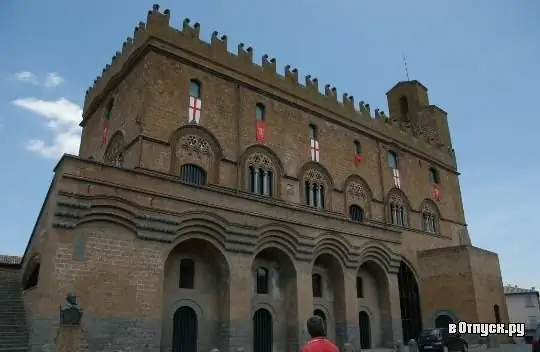
Description of the attraction
Palazzo Capitano del Popolo, located in the square of the same name in Orvieto, is a simple building that amazes with its nobility. It was built in the early years after the city became an independent commune in the early 13th century. In many important buildings of Orvieto, you can see architectural elements borrowed from the Palazzo, from the episcopal palace of the Palazzo dei Papi to the ancestral estates of the noble inhabitants of the city. Details such as the grandiose arches supporting the first floor of the building or the staggered cornices are ubiquitous throughout the city.
Construction of the Palazzo began in the first quarter of the 13th century, probably by order of Neri della Greca. For this, the site was chosen, where since 1157 stood the Papal Palace, which fell into decay as a result of a long period of popular unrest. According to some sources, the Papal Palace was even burned down.
The original Palazzo Capitano del Popolo consisted of a single floor in the form of a covered gallery, which was used as a market square or meeting place. Here, the magistrates often spoke to the population, and the rulers of the conquered cities swore allegiance to Orvieto. At the same place, in 1375, Orvieto submitted to the Church, becoming part of the Papal possessions.
Ten years after the completion of the construction, the Palazzo was expanded, and in 1315 a bell tower was added to it, on which a bell decorated with various symbols was placed. In 1472, the upper part of the palace was covered with a roof, and the huge hall was divided into two rooms - the large one was named Zala dei Quattrocento. For many decades, the Palazzo was the seat of the head of the militia, the city podestà (ruler) and the so-called Seven Signors.
Beginning in 1596, one of the rooms housed an auditorium, in which students studying law, theology and logic were engaged twice a day. This continued until the end of the 17th century, and nothing else is known about this mini-university.
In 1578, the upper floors of the Palazzo were used as a theater, the performances of which were sponsored by the commune government. Already in our time, in 1987-1989, restoration work was carried out in the building, after which the palace was turned into a conference center. During the same work, interesting archaeological discoveries were made, in particular, the foundation of an Etruscan temple of the 5th century BC was found. and part of a medieval aqueduct with a cistern.






